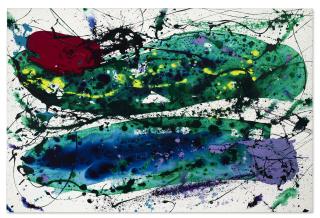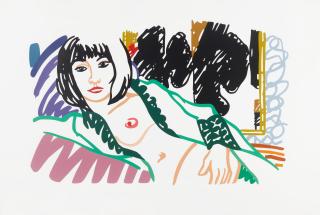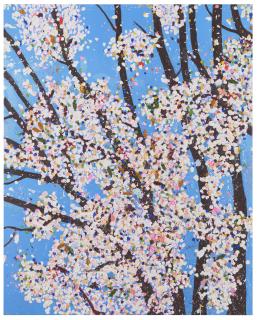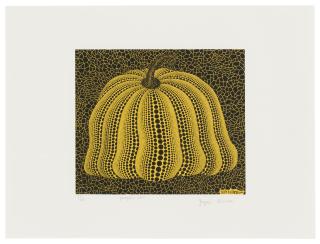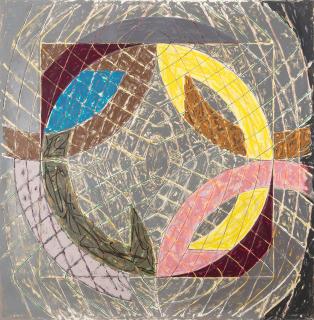Yoko Ono born 1933 in Tokyo
The artist Yoko Ono
- One of the most important representatives of Fluxus from the New York avant-garde.
- Considered a pioneer of conceptual art in the 1950s and 1960s.
- Let the audience remove pieces from her clothes at »Cut Piece«.
It was probably the most famous marriage in pop culture: Yoko Ono also became a world star through her relationship with Beatles star John Lennon. The tabloid press blamed her for the band's breakup, and so for a time she was hated by Beatles fans and the media alike.
Today she is considered one of the most important representatives of the Fluxus movement. In 2013, Elke Buhr even called Yoko Ono the »inventor of conceptual art« in an interview with Monopol magazine. Born in 1933 in Tokyo Prefecture, Yoko Ono studied philosophy while still in Japan - and later, in the USA, also music. Ono came there in 1952 because she had followed her family. Her father Eisuke had lived and worked there since 1935. From 1955, Ono composed her own songs - however, as the daughter of the former pianist, she had already performed on the piano as a child. Since the mid-1950s, Ono has lived intermittently in New York.
In the 1950s and 1960s, Yoko Ono was deeply rooted in the New York avant-garde. She knew Andy Warhol well and linked the US scene with the Japanese one. Her Lighting Piece (1955) – a request to light a match and wait for it to go out – could be seen as the founding stone of conceptual art, for which there was no term at the time.
When she decided not to show any work for an exhibition in Tokyo in 1962, she simply framed the appropriate instructions for it – ironically calling them instruction pieces. She published 500 copies of them in 1964 in the anthology Grapefruit.
Cut Piece also went down in history: In the mid-60s, she invited the public at various venues to cut pieces out of her clothing at their whim. Her close confidant from the early years, Konas Mekas, therefore describes her in retrospect as the most important conceptual artist from this period.
The most monumental and probably world-famous work is In-Bed (1969). Lennon and Ono lie in bed for two weeks in Amsterdam and Montreal during their honeymoon phase, and are filmed singing Give Peace a Chance. »We thought we'd achieve world peace with this, and next year,« Ono tells Elke Buhr in an interview in 2013.
Yoko Ono is said to still live in the Dakota Building apartment she moved into with husband Lennon in 1973. It is the building in front of which Lennon was gunned down in 1980. In the meantime, she has distanced herself somewhat from art, but has come closer to music again.
Die Künstlerin Yoko Ono
- Eine der wichtigsten Vertreterinnen des Fluxus aus der New Yorker Avantgarde.
- Gilt als Wegbereiterin der Konzeptkunst der 1950er und 1960er Jahre.
- Ließ sich bei »Cut Piece« vom Publikum Stücke aus ihrer Kleidung entfernen.
Es war wohl die berühmteste Ehe der Popkultur: Yoko Ono avancierte mitunter durch die Beziehung zu Beatles-Star John Lennon ebenso zum Weltstar. Die Boulevard-Presse schob ihr die Schuld für die Trennung der Band zu und so war sie eine Zeit lang unter Beatles-Fans wie in der Medienlandschaft verhasst.
Heute gilt sie als eine der wichtigsten Vertreterinnen der Fluxus-Bewegung. Elke Buhr heißt Yoko Ono 2013 im Rahmen eines Interviews mit dem Monopol-Magazin gar die »Erfinderin der Konzeptkunst«. 1933 in der Präfektur Tokio geboren, studierte Yoko Ono noch in Japan Philosophie – später, in den USA, schließlich auch Musik. Dorthin kam Ono 1952, weil sie ihrer Familie gefolgt war. Ihr Vater Eisuke lebte und arbeitete bereits seit 1935 dort. Ab 1955 komponierte Ono eigene Songs – Auftritte am Klavier hatte sie als Tochter des ehemaligen Pianisten allerdings schon als Kind. Seit Mitte der 1950er Jahre lebt Ono mit Unterbrechungen in New York.
In den 50er und 60er Jahren war Yoko Ono tief mit der New Yorker Avantgarde verwurzelt. Sie kannte Andy Warhol gut und verknüpfte die US-Szene mit der japanischen. Ihr Lighting Piece (1955) – die Aufforderung ein Streichholz anzuzünden und zu warten, bis es ausgeht – könnte man als Grundstein für die Konzeptkunst sehen, für die es damals noch keinen Begriff gab.
Als sie 1962 für eine Ausstellung in Tokio entschied, keine Arbeiten zu zeigen, rahmte sie einfach nur die passenden Anweisungen dafür – ironisch nennt sie sie instruction pieces. 500 Exemplare davon publizierte sie 1964 im Sammelband Grapefruit.
In die Geschichte ging auch Cut Piece ein: Mitte der 60er lud sie das Publikum an verschiedenen Orten dazu ein, nach Lust und Laune Stücke aus ihrer Kleidung herauszuschneiden. Ihr enger Vertrauter aus Anfangsjahren, Konas Mekas, beschreibt sie im Rückblick daher auch als wichtigste Konzeptkünstlerin aus dieser Zeit.
Das monumentalste und wohl weltbekannteste Werk ist In-Bed (1969). Lennon und Ono liegen während ihrer Honeymoon-Phase zwei Wochen lang in Amsterdam und Montreal im Bett, lassen sich dabei filmen, wie sie währenddessen Give Peace a Chance singen. »Wir dachten, damit erreichen wir den Weltfrieden, und zwar nächstes Jahr«, erzählt Ono 2013 im Interview mit Elke Buhr.
Yoko Ono soll noch immer im Apartment im Dakota Building leben, in das sie 1973 gemeinsam mit Ehemann Lennon eingezogen ist. Es ist das Gebäude, vor dem Lennon 1980 niedergeschossen wurde. Von der Kunst habe sie sich inzwischen etwas entfernt, dafür aber der Musik wieder etwas angenähert.
Yoko Ono in a nutshell
Cut Piece (1964) is one of Yoko Ono's early performance works. The artist sat alone on a stage with a pair of scissors in front of her. She instructed the audience to cut out small pieces of her clothing, each of which they were then allowed to keep.
The Yoko Ono Effect is a media-created, misogynistic image of a manipulative woman reminiscent of the biblical Fall. Ono's relationship with John Lennon is said to have reflected how much the former Beatles star had allowed herself to be influenced by her. By being always and everywhere together, Lennon is said to have always been under her thumb. Today, the so-called Beatles fairy tale is long considered outdated.
Häufige Fragen zu Yoko Ono
Cut Piece (1964) ist eine der frühen Performance-Arbeiten von Yoko Ono. Die Künstlerin saß alleine auf einer Bühne mit einer Schere vor sich. Sie wies das Publikum an, kleine Stücke aus ihrer Kleidung herauszuschneiden, die sie dann jeweils behalten durften.
Der Yoko Ono Effekt ist ein medial erschaffenes, misogynes Bild einer manipulativen Frau, das an den biblischen Sündenfall erinnert. Onos Beziehung zu John Lennon soll widergespiegelt haben, wie sehr der ehemalige Beatles-Start sich von ihr habe beeinflussen lassen. Indem sie immer und überall dabei war, soll er stets unter ihrer Fuchtel gestanden haben. Heute gilt das sogenannte Beatles-Märchen längst als überholt.




















